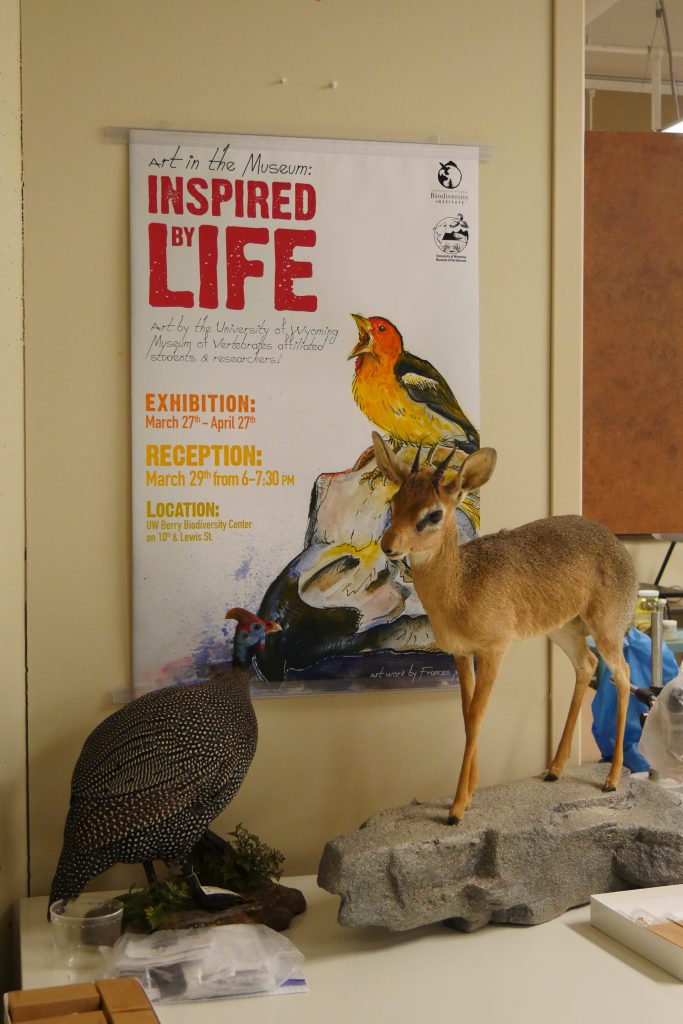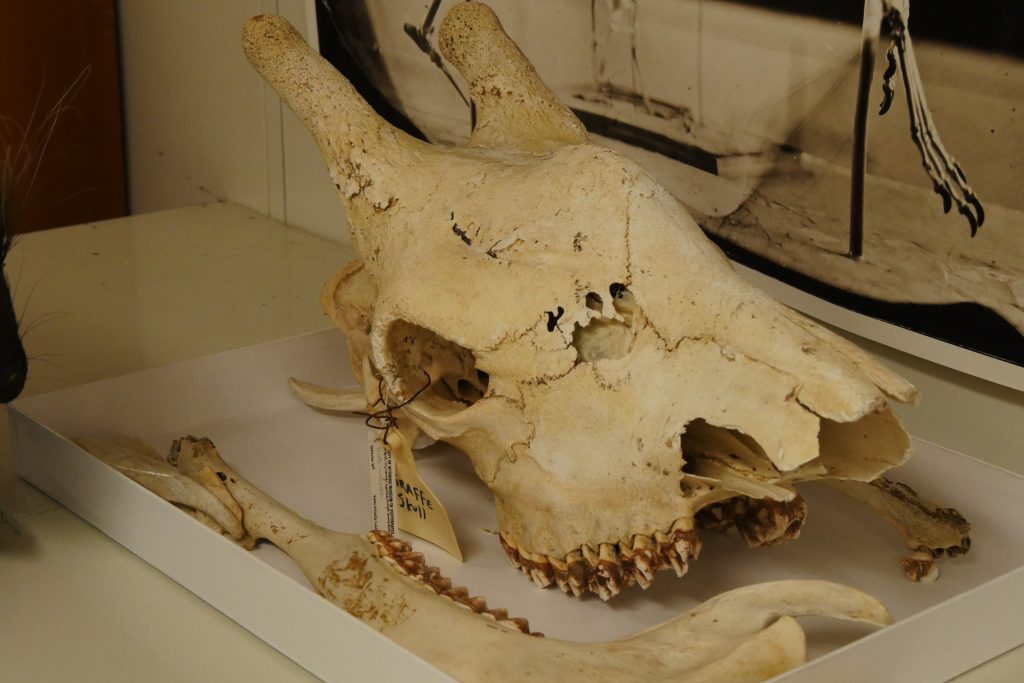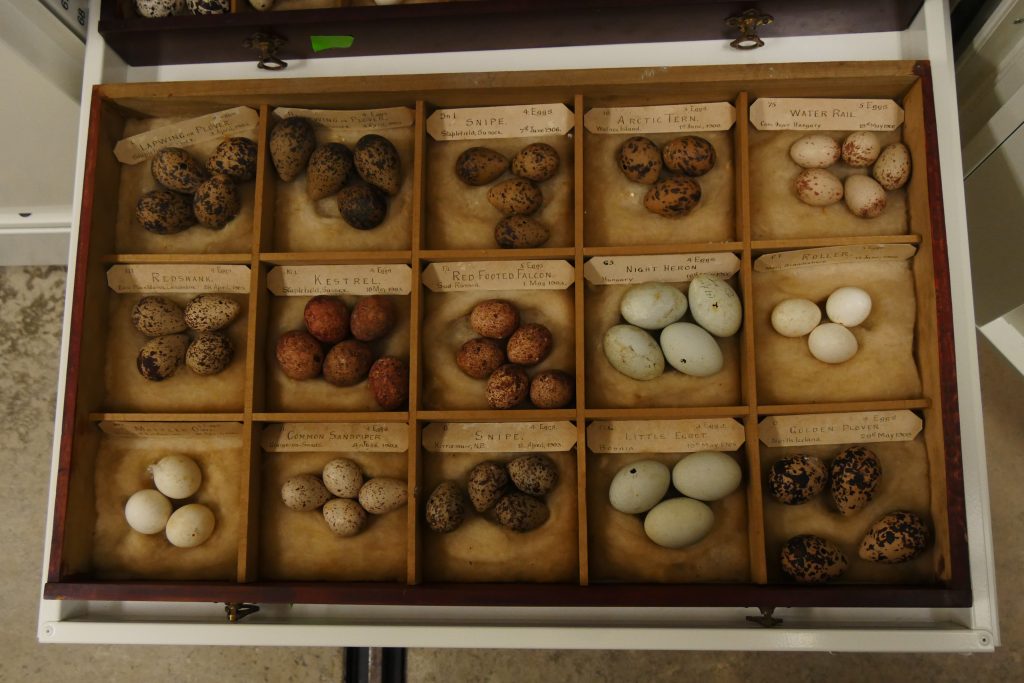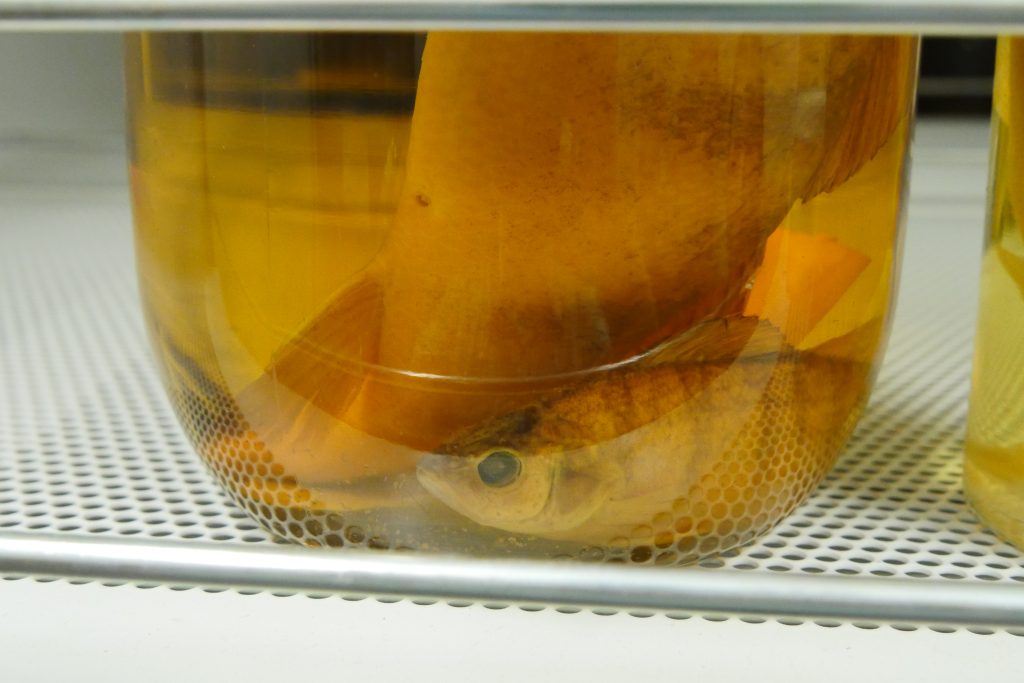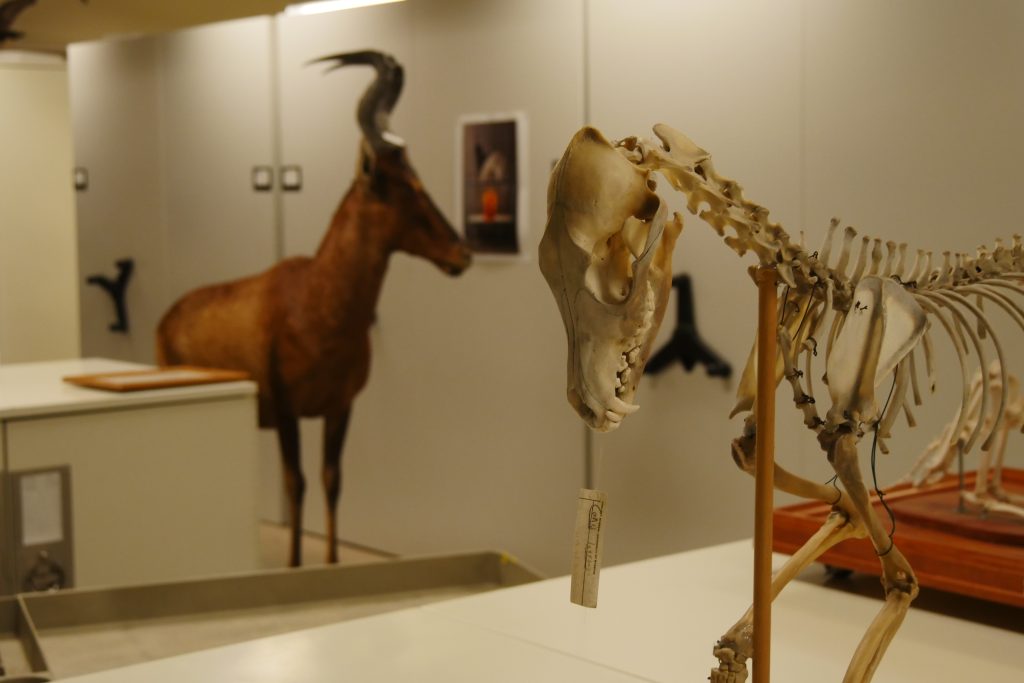Table of Contents
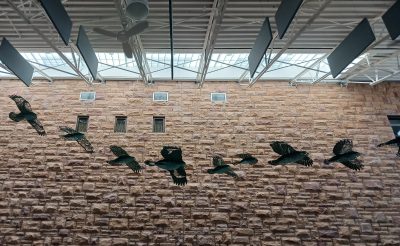
Walking into the University of Wyoming Berry Biodiversity and Conservation Center, art is everywhere you look. As you descend the wide staircase to the UW Museum of Vertebrates, metal hawks fly across the high beams of the ceiling. Footprints from many different creatures, including elk and bear, track their way across the atrium and into the hallways. The hall to the museum is decorated with student art of birds and skeletons.
Natural history museums are traditionally places of science, but the Museum of Vertebrates has a long record of working with artists to educate the public, foster relationships, and build understanding between people working in different fields.
“Museum work is not just science. It’s a little bit of history, art, detective work, and culture of the people that lived in the area,” says Beth Wommack, staff curator and collections manager of the Museum of Vertebrates. “People interested in science can come from anywhere.”
What is a vertebrate museum?
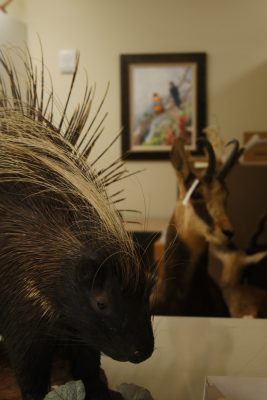
The UW Museum of Vertebrates is dedicated to preserving vertebrate species, from Wyoming toads to prairie grouse to a mountain zebra.
In contrast to geology or anthropology museums, vertebrate museums primarily contain modern or recently extinct species. The Museum of Vertebrates boasts dry collections, tissue samples, and wet collections, for a total of 22,000 specimens from 865 different species. The dry collection preserves mammals and birds, including skeletons, skins, nests, eggs, and scat, while the wet collection preserves whole reptiles,
amphibians, fish, parasites, and animal parts stored in ethanol.
Museum volunteers help maintain records and prepare animals to be preserved, which can involve freezing tissues, cleaning skeletons, preparing skins and pelts, or preserving whole animals in ethanol and formalin.
Creating relationships across Wyoming
Since the Department of Zoology and Physiology became part of the College of Agriculture, Life Sciences and Natural Resources in 2022, Wommack has found new opportunities to build relationships with people across the state.
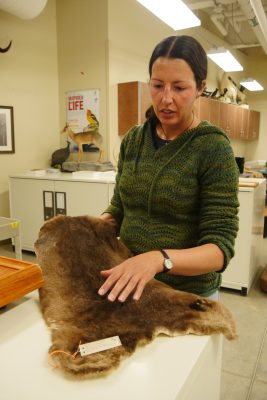
“I think being part of ag opens up new opportunities and ways we can connect with a large proportion of Wyoming’s rural community,” says Wommack. “People that are on the land know about that habitat, and connecting with them is going to be really exciting. They experience natural history every single day.”
Wommack and Matt Carling, faculty curator of the Museum of Vertebrates, have also prioritized building relationships with members of the Wyoming Game and Fish Department and other state and federal organizations that deal with wildlife. In some cases, agency collaborators are former UW students who have personal experience working with the museum.
Those relationships help the museum navigate permits and provide other benefits. Members of the Game and Fish sometimes donate animals the museum might not receive otherwise — allowing those animals to be remembered for as long as the collection lasts.
Seeing animals in a new way
One such animal that the Game and Fish donated to the Museum of Vertebrates was a problem black bear that was put down because it was eating human food. Wommack and student volunteers set out to prepare and preserve the large mammal.
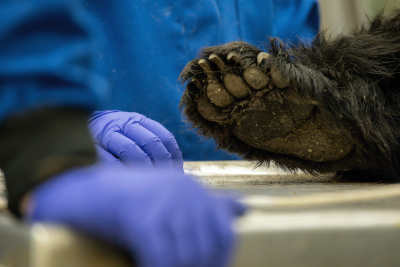
At the time, museum volunteer Jeff Turcotte was in the final semester of his zoology and physiology degree. As a photography minor, Turcotte was in a unique position to preserve this bear in a another way as well.
Turcotte set up an automated camera above the preparation area, taking a picture every 10 seconds. He later turned this footage into a time lapse video. In addition, Turcotte took photos of the preparation process using a digital camera.
Turcotte believes this project can help museum volunteers and those unfamiliar with natural history museums understand each other better. “By taking these single images and removing context, it can assist in showing how some unsuspecting member of the public might see this,” says Turcotte.
In addition to helping community members and scientists connect, art can help people connect to the animals themselves. Through art, people can identify with unfamiliar creatures. Many Wyomingites regularly interact with large game species, but they might not know as much about species like warbling vireos or southern red-backed voles.
“People approach animals in a certain way, and seeing them in art allows them to approach them in another way,” says Carling. “The more connected people feel to the places around them, the better off we are in trying to conserve [those places].”
Art as education
Art can also help teach people about science. For example, a set of three paintings from the project The Art of Hybridization hangs in the Berry Center. This project was funded by a Novel Outreach and Education grant from the Wyoming Biodiversity Institute. It was a collaboration between Wommack, former graduate student Paul Dougherty, and Lander-based artist Rosie Ratigan.
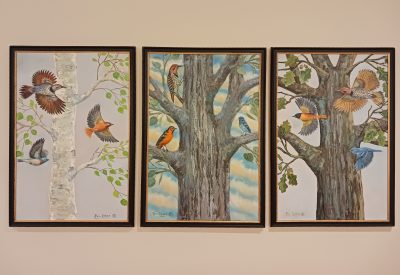
The project aimed to come up with new ways to teach people about hybridization, or what happens when animals from two different species interbreed. Ratigan created several oil paintings of birds, including the three large artworks on display in the Berry Center. In the outer paintings, Ratigan depicted parent species — lazuli bunting and indigo buntings, red-shafted and yellow-shafted northern flickers, and Bullock’s and Baltimore orioles. In the middle, she showed the resulting hybrid offspring species.
During the collaboration, each party had to learn to think in a different way. It was important to the scientists that Ratigan portray the correct number of feathers in a spread wing. On the other hand, Ratigan paid attention to factors like movement, drawing the viewer into the painting by showing birds flying toward the center of the image.
“Sometimes high-level art and high-level science can both be alienating to the general public,” says Turcotte. “By bridging the gap between them and combining them, you can bring the concepts down to a point where anyone can understand.”
Here to be used
Though the Museum of Vertebrates welcomes monetary support, Wommack and Carling encourage other kinds of donations as well. The museum is always looking for volunteers and also accepts salvaged animals from the public.
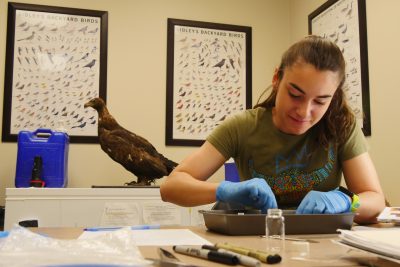
For Carling and Wommack, museum collections are made to be used, and it’s difficult to guess what they might be used for next. A century ago, for example, no one could have predicted that bird specimens would be used to track how much coal was in the air during the industrial era. “Museums are time machines,” says Carling.
This window into the past can be used in myriad ways, and Carling and Wommack embrace new suggestions. They ask that people request access to the collections at least two weeks in advance and treat the specimens with respect. As long as these requests are followed, though, they encourage members of the public to reach out. “We’re always waiting for someone to do something new with the collection,” says Wommack. “We want to have that conversation.”
To learn about how you can connect with the UW Museum of Vertebrates, contact Wommack at ewommack@uwyo.edu or check out the museum’s website at www.bit.ly/vert-museum.
This article was originally published in the 2024 issue of Roots & Ranges, an annual magazine published by the UW College of Agriculture, Life Sciences and Natural Resources.



